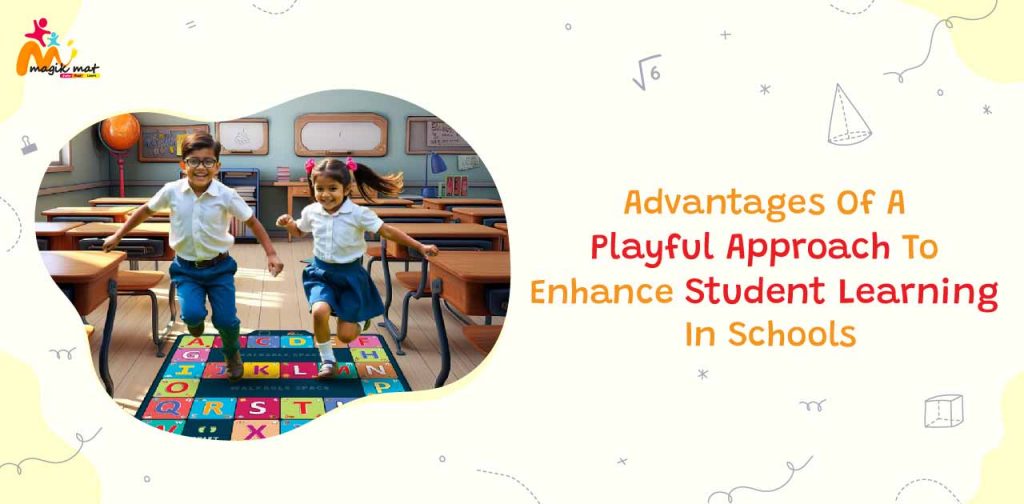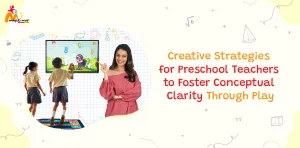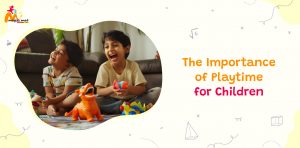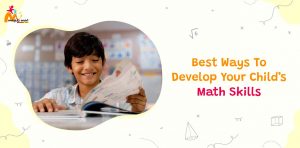Introduction
Interactive learning is reshaping the educational experience in schools across India. With the integration of playful, hands-on methods, education becomes more than a classroom routine; it transforms into an engaging journey filled with exploration and excitement. When students enjoy what they learn, they are naturally more motivated, focused, and inquisitive.
Today’s academic environments benefit immensely from educational products that blend enjoyment with curriculum-based outcomes. These products enhance confidence, foster creativity, and improve student participation. Institutions that embrace such educational products are laying the foundation for well-rounded, lifelong learners.
Why Play-Based Learning is Crucial in Early Education
Play-based learning serves as a bridge between structured curriculum and experiential learning. For students in early grades, this approach enables cognitive growth while supporting emotional, physical, and social development. It encourages exploration, experimentation, and communication, the core pillars of early education.
When children interact with their learning environment through play, they absorb knowledge more effectively. Schools that adopt play-based methods notice improved problem-solving, creative thinking, and language development. Concepts that once felt abstract become tangible and easier to grasp, making education both effective and enjoyable.
Turning Academics Into Adventures
In modern schools, educational games have evolved into transformative learning resources. They bring core academic subjects like Mathematics and English to life through interactive, goal-oriented experiences. Whether it’s solving number puzzles, identifying missing letters, or navigating story-based challenges, students develop deeper subject comprehension in an engaging environment.
Games sharpen memory, enhance logical reasoning, and improve attention spans. When integrated into school curricula, they turn learning into a collaborative and stimulating experience, laying the groundwork for academic excellence.
Enhancing Cognitive and Motor Development
Hands-on learning is essential for comprehensive development in early-grade learners. Activities that involve physical interaction, such as jumping, pressing, touching, or constructing, enhance fine and gross motor skills, improve spatial awareness, and strengthen cognitive ability.
Incorporating interactive activities, science experiments, and sensory tasks within educational play areas creates opportunities for students to apply abstract ideas in real-time scenarios. This experiential approach supports long-term retention and builds critical thinking from a young age.
Fuelling Creative Expression and Understanding
Art-based activities play a vital role in reinforcing academic content through visual and creative expression. From crafting mathematical models to depicting environmental themes, such activities strengthen both emotional and cognitive connections to the curriculum.
Such activities also develop hand-eye coordination and patience, helping children express their ideas creatively. Educational institutions that embed arts within their lesson plans provide a richer, more holistic academic experience that goes beyond textbooks.
Promoting Physical Engagement in Children
Movement-based learning helps energize and improve student outcomes. Activities like number hopscotch, action-based rhymes, or roleplay exercises turn passive instruction into active discovery. When students move while learning, they absorb more and stay engaged longer.
Active learning methods also enhance kids’ behavior, reduce stress, and promote collaboration. They are especially valuable in early education, where energy levels are high, and learning through motion proves more effective than traditional seated methods.
Sparking Curiosity Through Engagement
Interactive learning strategies empower students to become active participants in their education. Instead of receiving information passively, they ask questions, test ideas, and work through challenges. This engagement boosts retention and builds confidence in learners.
By using educational products that adapt to various learning styles, whether visual, auditory, or kinesthetic, schools can ensure that every child can excel. Interactive learning, therefore, supports inclusivity and academic equity.
The Future of Immersive Learning
As schools become more technology-integrated, they need to adopt modern educational products that meet today’s learning demands. These products, ranging from interactive screens to smart mats, blend audio, visuals, and physical activity into structured lessons.
Educators can personalize content to match student progress, making teaching more effective and responsive. Technology-supported learning products also prepare students for a future that values digital literacy, collaborative learning, and adaptability.
The Importance of EdTech Products in School Education
In contemporary education, EdTech products have moved from optional to essential. These products support early-grade students in understanding fundamental concepts like numbers, letters, colors, and shapes through dynamic interaction and tactile play.
By incorporating programmable tasks, problem-solving challenges, and responsive features, EdTech products enhance attention, build confidence, and streamline concept retention. Institutions leveraging such innovations create enriched academic ecosystems conducive to all-round development.
Magik Mat: A Revolutionary Interactive Learning Product for Schools
Magik Mat is an interactive EdTech product designed to meet the evolving needs of Indian schools and play-based learning environments. Designed specifically for children aged 3 to 8, Magik Mat transforms play area sessions into immersive, curriculum-aligned experiences.
This Bluetooth-enabled, dual-sided educational mat connects to Android TVs or laptops and comes pre-loaded with interactive content across core subjects like English, Mathematics, Environmental Science, and General Knowledge. Students engage with lessons through physical movements, jumping on letters, solving arithmetic by landing on numbers, or listening to rhymes and stories-all while actively participating in their learning journey.
What Sets Magik Mat Apart for Schools
· Curriculum-Aligned Educational Games – Reinforces key subjects with interactive lessons and foundational learning frameworks.
· Multi-Sensory Learning Approach – Combines visuals, sound, and physical movement to create a holistic and engaging learning experience.
· Skill-Based Learning Modules – Promotes early literacy, numeracy, motor development, and emotional awareness.
· Social Awareness – Introduces age-appropriate concepts like child safety, hygiene, gender equality, and positive habits.
· Approved by Child Development Experts – Tested and validated for pedagogical value, learning outcomes, and age suitability.
Empowering Learning Through Interactive Play
Magik Mat proves that when educational institutions invest in the right resources, learning becomes more inclusive, impactful, and inspiring. It fosters a learning environment where students are encouraged to move, explore, and collaborate.
From conventional teaching methods to dynamic learning zones within schools, Magik Mat adds a new dimension to education, one that balances movement with academics and creativity with the curriculum. It is not just an educational aid, but a progressive addition to future-ready schooling.
Conclusion: Investing in the Future of Learning
Interactive educational products like Magik Mat are redefining how Indian schools approach early education. By turning traditional lessons into vibrant, movement-based experiences, Magik Mat supports institutions in building a strong academic and developmental foundation for students.
Incorporating such an Edutech product into school infrastructure is not just a trend; it’s a strategic step towards nurturing smarter, happier, and more confident learners. For schools that value innovation, engagement, and excellence, it offers a dynamic and impactful way to enrich foundational education through movement-based learning.





